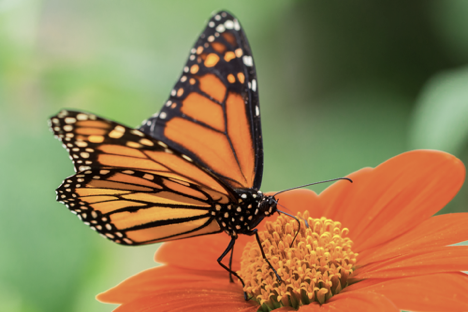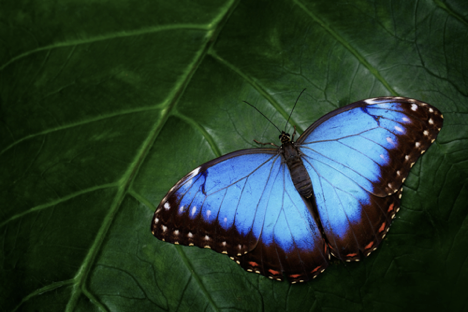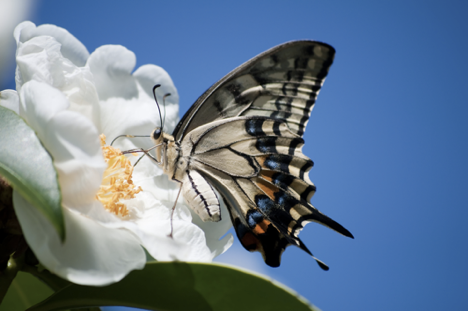Butterflies have been in the news for the last few years, and there’s a growing concern over the dwindling numbers of butterflies seen each year. In the past, it was not unusual to see several monarch butterflies in the yard every day. Recently, the numbers have dropped so dramatically that you would be thrilled if you saw just one! It is believed that the butterfly is a victim of herbicides and pesticides, as well as the loss of habitat.
The alarm was sounded, and many gardeners have responded by purposefully planting garden plants that are necessary for the butterfly’s survival and provide the best environment for the them. If you are interested in joining these gardeners, you need to understand the life cycle of the butterfly.
Life Cycle of the Butterfly
- Eggs. The life cycle begins when the female butterfly lays its eggs on the host plant. In some species like the monarch, there is only one plant that she will lay eggs on—the milkweed. But, for other species, there may be several different plants that can be a host plant. The adult female butterfly will lay her eggs on a leaf of the host plant.
- Larvae. When the eggs of the butterfly hatch, it is not a butterfly that emerges but a caterpillar. These are extremely small when they first emerge, and they have one job: to eat! Each species of caterpillar will only eat certain plants. That is the plant the butterfly must lay the eggs on. When these caterpillars emerge, they are way too small to move to a different plant. As the caterpillar eats, it starts to grow very quickly. It will shed its skin several times to accommodate this huge growth spurt.
- Pupa. Also called the chrysalis, this is the stage of transformation. The caterpillar will undergo metamorphosis, during which its body changes into the parts of the butterfly. The caterpillar will grow legs and wings, all tightly wrapped around its body. When the metamorphosis is complete, the butterfly will emerge.
- Butterfly. When the butterfly emerges, its wings are not functional. The wings will be soft and still folded around the body. The butterfly is very vulnerable at this stage, as it cannot escape any predator. After the butterfly rests, it will pump blood into its wings to expand them and start to flap the wings and learn to fly. Once it can fly, it will immediately set off to find a mate and reproduce.
To successfully attract and keep the butterflies in your garden, you must provide for their needs during each cycle.
How to Plan A Butterfly Garden
Step 1:
Do a little research. Find out what butterflies are native to your state. With that information, you can find out what plants those particular butterflies need to lay eggs on. Butterflies have a short life span; some only live a couple of weeks. So, to have butterflies in your yard season-long and again next year, you must provide the plants they need to lay their eggs.
As was mentioned earlier, the monarch only lays eggs on the milkweed plant. This plant is considered a weed, so it isn’t usually grown as a garden plant. Milkweed is found along the highways and on the fence lines between farm fields. With modern farm techniques and the huge equipment farmers use today, many of the fence lines have been eliminated, and several small fields have been combined into one. One negative result is the loss of habitat for animals, birds, and insects.
At the same time, it has become common practice to mow the natural vegetation from roadsides. The result is that there are very few milkweed plants for the monarchs. Luckily, some seed companies have recognized the problem and have propagated the plant and now offer milkweed seeds for purchase.
Just remember that the main purpose of the host plant is to provide food for the caterpillar stage of the butterfly. It will get eaten and not be the most attractive plant in your garden. You may want to select a part of your garden as the butterfly garden, so it will be expected to look a little less cared for. If you are going to incorporate the host plants into your garden, you may want to have other plants around them to cover the damaged host plants.
Step 2:
Provide for emerging butterflies. Butterflies can be damaged in high winds. If at all possible, give your butterfly garden a windbreak. This can be a wall, a fence, or several dense shrubs. The butterflies are cold-blooded, so they like to bask in the sun or a warm spot. Place a few flat stones or rocks in the garden where they will be warmed by the sun. The butterflies will love it!
They also need water. Butterflies don’t like open water like a birdbath. They like to drink the water from wet soil or sand. You can provide this by burying a shallow container or even a bird bath bowl into the ground, so the top of the container is level with the ground. Fill the container with sand and then add water. The sand should be wet but with no visible standing water.
Step 3:
Butterflies need food. They drink the nectar from flowers. While each type of butterfly may have a favorite flower, they can use nectar from all flowers. The best choice is to plant a variety of flowers for the butterflies to choose from. A good choice would be a butterfly wildflower mix. By planting a mix of flowers, there will always be something blooming and, with a large variety of flowers to choose from, the different types of butterflies in your garden will be happy and stay.
Most butterflies hibernate in the winter. They will spend the winter under leaves or tucked into the bark of a tree. The major exception to this is the monarch, which migrates to the south for winter and returns when it warms up in spring. If you can provide what your butterfly needs in each stage of its life cycle, you will enjoy generation after generation of beautiful butterflies.



